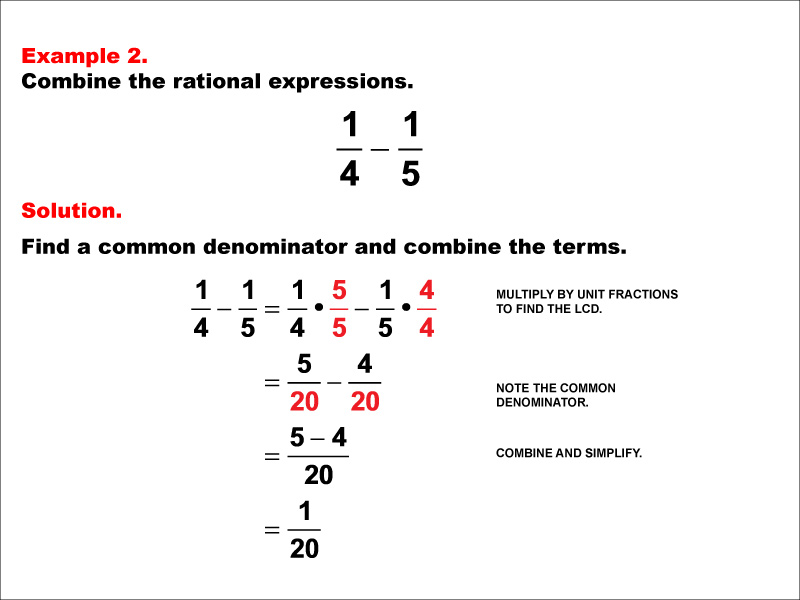
Display Title
Math Example--Rational Concepts--Rational Expressions: Example 2
Display Title
Math Example--Rational Concepts--Rational Expressions: Example 2

Topic
Rational Expressions
Description
This example illustrates how to combine the rational expressions 1/4 - 1/5. The solution involves finding a common denominator, which is 20, and then subtracting the fractions to get 1/20. We multiply each fraction by the appropriate factor to create equivalent fractions with the common denominator: (1 * 5/5) - (1 * 4/4) = 5/20 - 4/20. Then, we subtract the numerators while keeping the common denominator: (5 - 4)/20 = 1/20.
Rational expressions are an important concept in algebra, representing the ratio of two polynomials. This collection of examples helps teach the topic by providing a variety of scenarios where students must combine rational expressions through addition or subtraction. By working through these examples, students learn to identify common denominators and perform the necessary operations to simplify the expressions.
Exposure to multiple worked-out examples is crucial for students to develop a deep understanding of rational expressions. Each example reinforces the core concepts while introducing slight variations, helping students recognize patterns and build problem-solving skills that can be applied to more complex situations.
Teacher's Script: In this example, we're subtracting rational expressions. Pay attention to how we find the common denominator and then perform the subtraction. Can you explain why the common denominator is 20 in this case?
For a complete collection of math examples related to Rational Expressions click on this link: Math Examples: Rational Expressions Collection.
| Common Core Standards | CCSS.MATH.CONTENT.HSA.APR.D.6, CCSS.MATH.CONTENT.HSA.APR.D.7 |
|---|---|
| Grade Range | 9 - 12 |
| Curriculum Nodes |
Algebra • Rational Expressions and Functions • Rational Expressions |
| Copyright Year | 2013 |
| Keywords | fraction, adding, adding rational expressions, adding fractions |